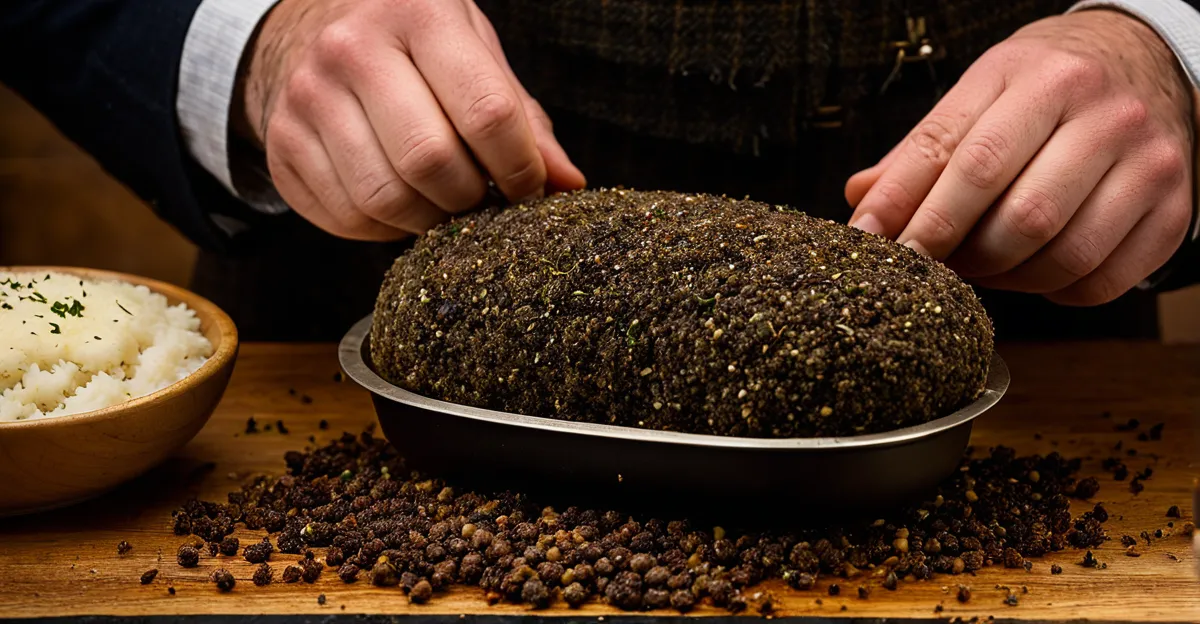Reliable Methods for Cooking Traditional Haggis
Cooking traditional haggis accurately is vital to preserving its distinctive flavor and texture. The most trusted traditional haggis cooking methods emphasize gentle heat to prevent bursting while cooking the haggis through evenly. Typically, Scottish techniques revolve around boiling or steaming the haggis in its casing for about 90 minutes.
Authentic preparation begins with sourcing key ingredients: sheep’s pluck (heart, liver, lungs), oatmeal, suet, onions, and spices. These combine to create the characteristic rich and slightly nutty flavor. Using natural casing, usually the sheep’s stomach, is essential. It holds the mixture together during cooking and imparts a subtle, desirable earthiness.
Also read : How can you create an authentic English breakfast?
Traditional methods also require precise equipment. A large pot with a tight-fitting lid for boiling or a steamer basket ensures steam circulation, which gently cooks the haggis without water intrusion. Cooking must happen at a simmer rather than a hard boil to protect the casing’s integrity.
Following these traditional haggis cooking methods guarantees an authentic and satisfying dish, showcasing the complexity of this Scottish culinary classic.
Also read : How do you achieve the perfect balance in a Welsh rarebit?
Steaming and Boiling: Classic Approaches
Mastering steaming haggis and boiling haggis is central to traditional haggis cooking methods. Both rely on gentle, consistent heat to cook the haggis thoroughly without compromising texture or causing the casing to burst.
For steaming, place the haggis in a steamer basket over simmering water, ensuring the water does not touch the haggis. Cover tightly and steam for approximately 90 minutes. This method allows steam to circulate evenly, preserving moisture and preventing any sogginess.
Boiling requires a large pot filled with enough water to submerge the haggis completely. Heat the water to a gentle simmer—around 85°C to 95°C—and maintain this temperature throughout cooking. Boil the haggis for about 90 minutes, turning it occasionally to promote even cooking. Avoid boiling vigorously as this risks tearing the casing.
The essential cooking equipment includes a large pot with a secure lid for boiling or a well-fitting steamer basket for steaming. Using a thermometer helps maintain ideal temperatures. These traditional haggis cooking methods keep the texture firm but tender and enhance the authentic flavor that defines this Scottish delicacy.
Baking and Modern Adaptations
Baking haggis offers a convenient alternative to traditional steaming and boiling, especially suited to modern kitchens. To bake haggis, preheat your oven to 180°C (350°F). Pierce the casing lightly with a fork to allow steam to escape and place the haggis on a baking tray. Cook for approximately 60 to 90 minutes, depending on size, turning halfway through to ensure even heat distribution.
This oven method uses dry heat, which can produce a slightly firmer texture and a toasted aroma that contrasts with boiled or steamed versions. While it lacks the moisture of steam, baking helps retain rich, savory flavors by concentrating juices inside the casing.
Adjusting baking time and temperature is essential to avoid casing rupture or drying out the haggis. Wrapping the haggis in foil can help maintain moisture during baking, mimicking some benefits of traditional methods.
For those exploring alternative cooking techniques, combining baking with a prior brief steaming phase offers the best of both worlds: tender texture and a crisp exterior. Whether embracing full baking or hybrid styles, understanding the characteristics of haggis’s delicate casing and filling keeps the flavor authentic and satisfying. This modern adaptation suits cooks seeking efficiency without sacrificing the traditional essence.





